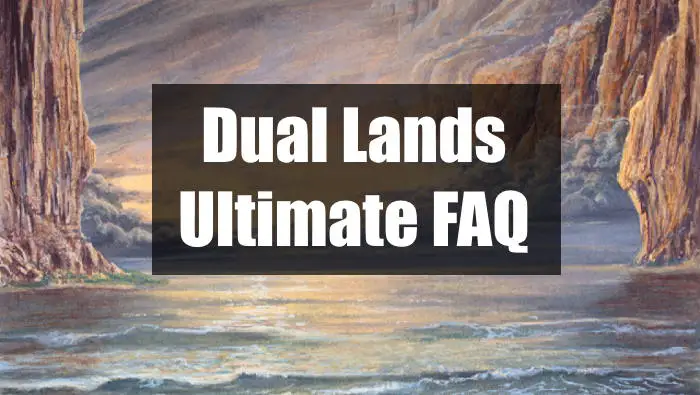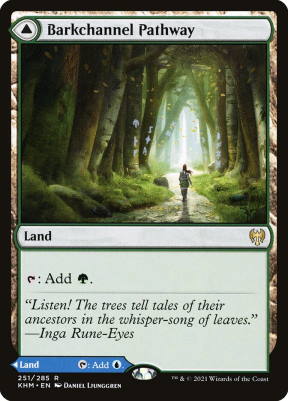When you’re building or tweaking a deck, it can be easy to focus on all the powerful spells you want to play. However, properly building your land base is just as important. Most MTG decks will want enough dual lands to consistently get the mana they need.
Dual lands play an important role in any multicolored deck. They can add two different colors of mana, bringing both consistency and flexibility to a deck. Replacing basic lands with duals means you’re more likely to draw a source for all of your colors. When they’re in play, they let you cast spells with different mana requirements. Although they can have their drawbacks, dual lands will give you the mana you need more often than basics alone will.
Fine-tuning your mana base with the right dual lands is something every MTG player should do. The rest of this article will explain why dual lands are so strong, as well as which ones will make your deck as consistent as possible.
Table Of Contents:
- What Are Dual Lands In MTG?
- How Many Dual Lands Are Allowed?
- Which MTG Sets Contain Dual Lands?
- What Makes Dual Lands So Good?
- Why Are Some Dual Lands So Expensive?
- What Types of Dual Lands Are There in MTG?
- What Are the Top 5 Dual Lands?
- Will Dual Lands Ever Be Reprinted?
- End Step
| Pros | Cons |
| Adds mana of different colors | Some enter tapped or cost life |
| Some cards punish nonbasics |
What Are Dual Lands in MTG?
Dual lands are any land that can tap for two different colors of mana. As an example, let’s look at Woodland Cemetery. It taps for either black or green mana, so it’s considered to be a ‘dual land’.
The term ‘dual land’ can also refer to the original cycle of duals. Bayou would be the green/black dual land, for example. Other cycles of dual lands have specific names as well. Woodland Cemetery and the other lands in its cycle are called ‘check lands’ since they check to see if you control certain land types.
How Many Dual Lands Are Allowed?
Unlike basic lands, you can’t run as many copies of a dual land as you want. You can only have four copies of any given dual land, just like most cards.
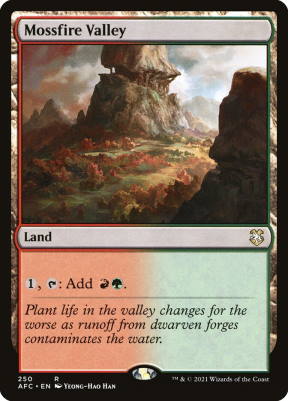
With that said, there’s no limit to how many total dual lands you can have in your deck. If you want, you can fill your mana base entirely with nonbasic lands. In fact, many high-powered decks run mostly dual lands.
Which MTG Sets Contain Dual Lands?
Most MTG sets come with dual lands nowadays. How likely they are to show up in an individual pack, however, depends on what rarity the land is. Most sets have a cycle of dual lands available at both common and rare.
Related: Unfinity Lands: Full-Art Basics And Ravnica Shock Lands
For example, let’s look at Guilds of Ravnica. This set had two cycles of dual lands: Guildgates and Shock Lands. Every pack had a Guildgate instead of a basic land, so there was no shortage of each color pair’s gate. Shock Lands, on the other hand, only showed up as rares or foils. As a result, your chances of opening a particular Shock Land were much lower.
RELATED: Set Boosters vs Draft Boosters FAQ
What Makes Dual Lands So Good?
It’s easy to underrate dual lands. After all, they don’t give you spell-like effects like Field of the Dead or Karn’s Bastion, so what gives? Why are dual lands so strong when all they do is add mana?
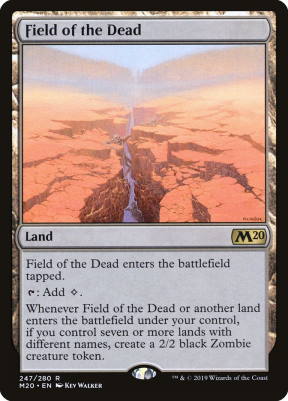
The biggest reason is consistency: dual lands make it less likely that you’ll be stuck with just some of your colors. If a dual land replaces a basic, that slot in your deck is a source for two colors instead of just one. Having more sources for each color in your deck means you’re more likely to draw at least one source.
Dual lands also give you more flexibility. Imagine that you’re playing a red/black deck and you have three lands out. If you had two Bloodfell Caves, you could cast a spell that costs 1RR or one that costs 1BB. If you only ran basics, however, you could only cast one or the other. When you play with dual lands, you’ll likely have more options.
Running lots of dual lands also makes it easier to play three or more colors. If you only ran basics, you wouldn’t even have all of your colors out until turn three at the earliest. That’s also assuming that you happen to draw a land for each color, instead of two or even three for one of them.
Lastly, some duals have the basic land types. This means that when you crack a fetch land, you can get Steam Vents, for example, instead of a basic land. This interaction adds even more consistency to your deck.
With the right suite of duals, a fetch land can get you any color. Some ramp spells like Farseek can also get nonbasics, so you can put your more flexible lands onto the battlefield.
Why Are Some Dual Lands So Expensive?
The price of dual lands can vary wildly. Some are worth pennies while others are worth hundreds of dollars. Much like a lot of things in life, the high price of some duals is due to supply and demand.
Related: MTG Card Value
Powerful cards will always have a high demand. You might not think that lands can vary too much in power level, but there’s a big difference between the duals.
Some duals enter tapped no matter what, some have conditions that let them enter untapped, and the best always enter untapped. When your land enters tapped, you’re losing out on a mana for that turn. There might be times when you couldn’t have used that mana anyway, but there will also be times when you could’ve.
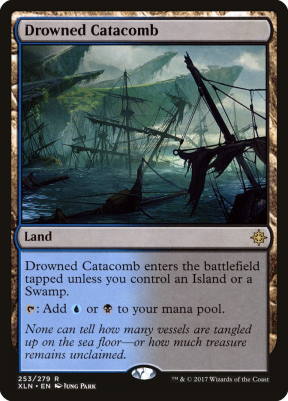
It’s often best to “curve out” by playing a one-drop on turn one (if you have one), a two-drop on turn two, and so on. The best dual lands are the ones that let you follow through on that smooth game plan.
Another big factor in the cost of dual lands is how big the supply is. If a card has only been printed at rare, there just won’t be as many copies available. Cards that haven’t seen many reprints can also spike in price.
Lastly, the size of a set’s print run can affect the price of its cards. The dual lands from Battlebond are all over fifteen dollars, but the duals from Commander Legends are all under ten. These lands all belong to the same cycle, so they’re at the same power level. Commander Legends, however, had a larger, more recent print run, so its lands are cheaper than Battlebond’s.
What Types of Dual Lands Are There in MTG?
MTG has seen dozens of dual lands, and they can all be divided into ‘cycles’. Essentially, a cycle gives each color pair a land that works the same way for all of them. Listed below are all of the different cycles so you can reference the options available to you.
| Cycle | Example |
| Original Dual Lands | Tundra |
| Pain Lands (Untapped) | Adarkar Wastes |
| Tainted Lands | Tainted Field |
| Depletion Lands | Land Cap |
| Freeze Lands* | Cloudcrest Lake |
| Tap Lands | Meandering River |
| Signet Lands* | Skycoud Expanse |
| Bounce Lands | Azorius Chancery |
| Shock Lands | Hallowed Fountain |
| Original Snow Duals* | Boreal Shelf |
| Storage Lands* | Calciform Pools |
| Nimbus Lands* | Nimbus Maze |
| Changing Lands* | River of Tears |
| Horizon Lands* | Silent Clearing |
| Opponents’ Boon Lands* | Grove of the Burnwillows |
| Tribal Lands* | Wanderwine Hub |
| Filter Lands | Mystic Gate |
| Check Lands | Glacial Fortress |
| Refuge Lands | Sejiri Refuge |
| Man Lands | Celestial Colonnade |
| Fast Lands | Seachrome Coast |
| Guildgates | Azorius Guildgate |
| Scry Lands | Temple of Enlightenment |
| Pain Lands (Tapped)* | Salt Flats |
| Gain Lands | Tranquil Cove |
| Battle Lands | Prairie Stream |
| Reveal Lands | Port Town |
| Bicycle Lands* | Irrigated Farmland |
| Bond Lands | Sea of Clouds |
| Pathways | Hengegate Pathway |
| Kaldheim Snow Duals | Glacial Floodplain |
| Snarls* | Shineshadow Snarl |
| Campuses* | Silverquill Campus |
| Bridges | Razortide Bridge |
| Slow Lands | Deserted Beach |
What Are the Top 5 Dual Lands?
Now that we’ve gone over their strengths, which duals should you run? There are a lot of great dual lands throughout MTG’s history, but these five stand out as the best of the best.
#5: Bond Lands
The Bond Lands have more narrow uses than the other entries on this list, but when they’re good they’re fantastic. In a multiplayer game, these will come into play untapped with no extra conditions. These lands are all-stars in formats like Commander, but they’ll always be lackluster in 1v1 games. To balance their high ceiling and low floor, I’ve put them at #5.

RELATED: 5 Common Commander Deck Building Mistakes
| Pros | Cons |
| Great in multiplayer | Bad in 1v1 |
Recommended Formats: Commander, Brawl, Oathbreaker
#4: Slow Lands
The Slow Lands are a new cycle of duals, and their power was apparent right away. They’re only bad in the early game, but that’s when entering tapped matters the least. Few decks have a turn one play, so having one of these in your opening hand isn’t too bad. You should only avoid these if your deck needs a turn one play consistently.
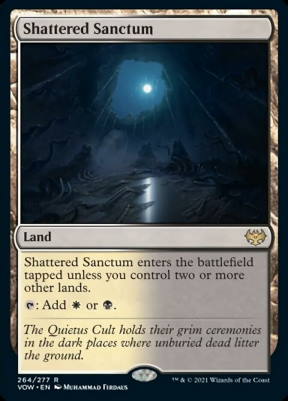
| Pros | Cons |
| Good late | Bad early |
Recommended Formats: All formats
#3: Pathways
The Pathways work differently than any other dual land because they’re all MDFCs (Modal Double Faced Cards). They always enter untapped, but you choose their side when you play them. Each side adds mana of different colors, so they can’t tap for either like other duals. With that said, they still give you whatever mana you need when you draw them, and entering untapped is huge.
| Pros | Cons |
| Enter untapped | Only add one color |
Recommended Formats: All formats
#2: Shock Lands
It probably doesn’t shock you that these rank so highly. Unlike most other duals, the Shock Lands let you choose whether or not they come in untapped. If you can’t use the extra mana, you can have them enter tapped. Otherwise, two life isn’t a big cost to pay for the flexibility these lands give you. These also have the basic land types, so they work well with fetches.
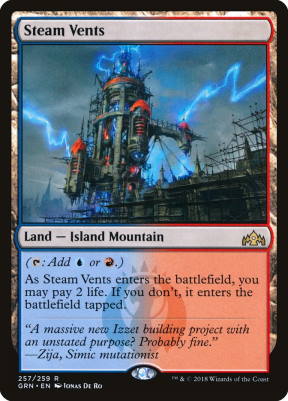
| Pros | Cons |
| Gives you a choice | Can cost life |
| Basic land types |
Recommended Formats: All formats except for Standard and Brawl
#1: Original Dual Lands
No other cycle will be as consistent and powerful as the Original Dual Lands. First, these lands always come into play untapped. They also have the basic land types, so you can go get them with fetch lands. There’s honestly no reason you shouldn’t put these in your decks if you can.

| Pros | Cons |
| Enter untapped | None |
| Basic land types |
Recommended Formats: Commander, Legacy, Vintage
Will Dual Lands Ever Be Reprinted?
It depends. Between premier sets and commander precons, some dual lands get multiple reprints each year. The Gain Lands, for example, see frequent reprints. Some duals also have such low demand that we don’t need reprints.
The more highly sought after lands get the occasional reprint, but these can be few and far between. Masters sets will usually have solid reprints, and commander products can have hidden gems.
Most of the time, however, the best chance at getting these reprinted is a return to their original plane. The Shock Lands, for instance, were first seen in Ravnica, and they got reprints in both returns to that plane.
Lastly, it is unlikely that the Original Dual Lands will ever be reprinted. All ten of them are on the reserved list, which contains all of the cards WOTC has promised to never reprint.
There has been a lot of debate around whether or not the reserved list should even exist, but WOTC hasn’t shown any signs of discarding it. As long as these lands aren’t widely available, you and your play group could consider proxying them. That way, you can power up your land base without breaking the bank.
RELATED: MTG Proxies: An Ultimate Guide
End Step
We’ve gone over why you should run dual lands, as well as which ones deserve a slot in your deck. Tweaking your mana base can be a fun project, so sit down, take a good look at your lands, and make your deck the best that it can be!
